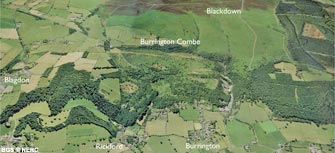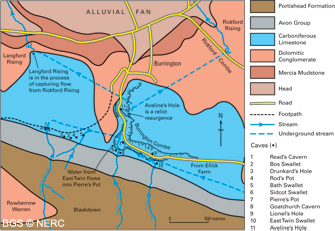
Burrington Combe
Burrington Combe is a fine example of a typical Mendip gorge, and provides a well exposed, easily accessible, section through the Carboniferous Limestone sequence. The oldest rocks are exposed in the East and West Twin valleys draining Blackdown, and show the transition from the older Devonian sandstones of the Portishead Formation through the limestone and mudstone of the Avon Group to the younger marine Carboniferous Black Rock Limestone, which are very well exposed in the upper part of Burrington Combe. The rest of the Carboniferous Limestone sequence is exposed in the Combe.
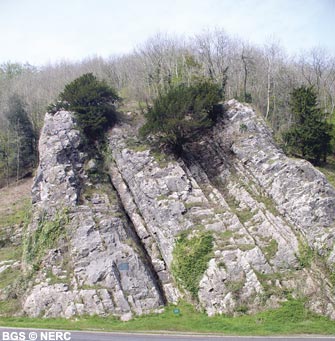
The overlying Burrington Oolite forms the prominent crag known as the Rock of Ages. This is the site of the apocryphal story of the Reverend Augustus Toplady who supposedly sought shelter during a storm here, inspiring the hymn of the same name. The lower part of the Combe cuts through the Clifton Down Limestone which can be seen in the many small crags and quarries on the east side of the valley. The Triassic Dolomitic Conglomerate can be seen in a series of small roadside crags and old quarries on the hillside south of Blagdon.
North-east of Burrington is Blagdon Combe, a deep sinuous dry valley cut into the Triassic Dolomitic Conglomerate. It was cut by the Congresbury Yeo, which once flowed through here before abandoning its course for an easier route through the softer rocks in the Vale of Wrington to the north.
Caves
Several small streams drain the northern side of Blackdown and sink on reaching the limestone, forming caves. The largest occur in the East and West Twin valleys, including Goatchurch Cavern, an abandoned former stream sink forming a complex three-dimensional phreatic maze, Sidcot Swallet, a smaller cave about 250 m long, and East Twin Swallet. Several other small phreatic caves also occur nearby.
Between Burrington Combe and Rowberrow Warren are a series of small caves. The largest, Rods Pot, is popular with cavers and in one of the neighbouring depressions Beaker age pottery (2500—600 BC) and earlier Neolithic implements were found.
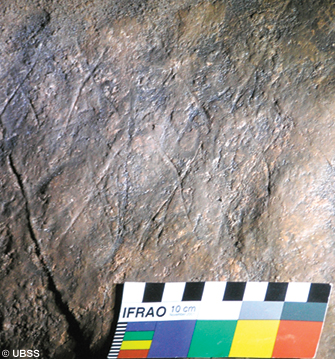
The cave nearest Rowberrow Warren is Read's Cavern, once home to early Iron Age occupants, and their remains were found during an archaeological dig, buried under a rockfall.
In the Combe itself, just up the valley from the Rock of Ages is Aveline's Hole. Discovered in 1797, it is a fine example of a phreatic cave formed below the water table. It was once a spring, but was abandoned by the river which now drains to two springs at Rickford and Langford. The cave is an important archaeological site and contains the earliest dated human cemetery in Britain; around 8400 years ago during the Mesolithic period. It also contains one of the few known examples of cave art in the UK.
Flora and Fauna
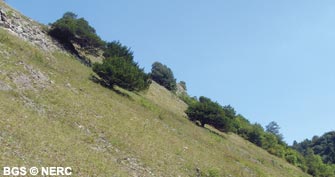
The thin soils developed on the steep slopes of the Combe provide a very species-rich limestone grassland habitat with many different lime-loving plants.
The warm, south-facing slopes of the valley are particularly important for butterflies and other invertebrates, while many ferns, mosses and liverworts flourish in the humid sheltered East and West Twin valleys.
- Home
- Overview maps
- Locality
areas
- Cheddar Gorge
- Charterhouse
- Blackdown
- Burrington Combe
- Shipham & Rowberrow
- Crook Peak & Axbridge
- Banwell to Churchill
- Priddy
- Harptree & Smitham Hill
- Draycott & Westbury-sub-Mendip
- Wookey Hole & Ebbor Gorge
- Wells
- Great Elm & Vallis Vale
- Mells & the Wadbury Valley
- The Vobster area
- The Whatley area
- Torr Works & Asham Wood
- Beacon Hill
- Stoke St Michael & Oakhill
- Holwell & Nunney
- Shepton Mallet & Maesbury
- Gurney Slade & Emborough
- The Nettlebridge valley
- Geology
- Minerals and mines
- Quarrying
- Caves and karst
- Biodiversity
- Detailed site information
- Acknowledgements
- External links
- Search
- Site map
